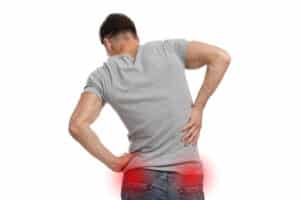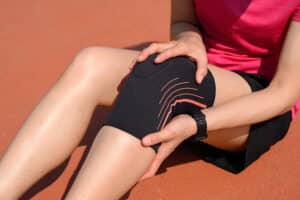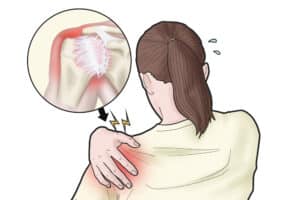Hamstring strain injury is a common occurrence, particularly when you are involved in sports.
The hamstring (located at the back of the thigh) is made up of three muscles. The semitendinosus, semimembranosus, and biceps femoris muscles comprise the hamstring muscle group. A hamstring strain injury occurs when one or more of the hamstring muscles (or tendons) are torn or strained, either partially or completely.
Hamstring strains are a very common injury of the lower body. They most commonly affect athletes participating in sports involving running at high speeds, such as baseball, soccer, football, or running track. Hamstring strain injuries may cause considerable damage to the muscles, resulting in activity limitation, or restriction of participation in sporting activities.
Hamstring Strain Injury Diagnosis
Hamstring strain injury diagnosis starts with a comprehensive knowledge of your medical/health history and the cause of the injury. Your physiotherapist may ask you questions like:
- What activity were you doing when you first noticed the pain?
- Did you feel a popping sensation?
- Where do you feel the pain now?
- Was there any bruising or swelling around the area?
- Have you experienced this pain before?
Hamstring strain injury is diagnosed when there is an onset of thigh pain during activity, the pain is reproduced when the hamstring is stretched and/or activated, muscle tenderness when examining the area with the hands during a physical examination, and loss of function.
Your physiotherapist will perform an evaluation to help determine the extent of the injury and to put together a treatment plan.
- Observation, to note any bruising, swelling, or discoloration of the area.
- Pain assessment, to gauge the severity of pain that you are experiencing and the activities that cause more pain.
- Palpation (gently pressing with the fingers on the area), to isolate the location and size of the tender area.
- Range-of-motion test, to determine the difference in range of motion between your healthy and injured leg.
- Muscle-strength test, to measure the strength of the hamstring muscles compare to your healthy leg.
- Gait analysis (assessment of the way the body moves), to note any changes in the way that you walk.
What are the symptoms of Hamstring Stain?
Hamstring strain injuries happen quite suddenly with the pain developing in the back of the thigh. Usually, an activity is being performed that causes the pain – very quickly prompting the person to stop performing the activity.
- You may feel a sudden, sharp pain in the back of the thigh.
- There might also be a “popping” or tearing sensation.
- Swelling and tenderness usually develop within a few hours of the incident.
- There might be bruising or a change in skin colour along the back of the leg.
- You may have difficulty sitting comfortably, lifting the leg when lying down, or straightening the knee.
- Walking or other daily activities may reproduce the pain.
In sports, hamstring injuries often occur when the hamstring muscles are stretched quickly (kicking or sprinting).
Treatments for Hamstring Strain
At home treatments such as rest, ice, and pain medicine (ibuprofen or acetaminophen) can help to relieve the pain and swelling of a hamstring injury. In most cases, hamstring strain injuries are successfully managed with physiotherapy. Rarely, surgery is done to repair a hamstring muscle or tendon.
Physiotherapists are movement experts. They improve quality of life through hands-on treatments, education, and prescribed exercises. Your physiotherapist will design a customized treatment plan specific to your injury and treatment goals so you can work towards getting back to the activities that you enjoy doing.
Preventing Hamstring Strains
If you have experienced a hamstring strain, you know the pain and will want to do everything that you can in the future to prevent another one. You can decrease your risk of a hamstring strain by:
- Warming up your muscles before participating in sports activities.
- Gradually increasing the frequency and intensity of new activities.
- Continue to strengthen your hamstring muscles regularly.
- After activities and workouts, stretch, apply ice, and rest as needed.
What’s the Recovery Time?
The symptoms caused by a mild injury may only last for a few days; symptoms of a more severe injury can last for weeks.
The good news is that most hamstring injuries heal within 6 weeks. While doing activities, you may notice some swelling and pain around the injured hamstring. Muscle stiffness and weakness are also common, and you may not be able to do the things you normally do, such as running or playing sports, for a few weeks. The time it takes to recover fully is different for everyone. A slow and steady progression of your rehabilitation is key to a successful return to the activities that you love.
If you have experienced a hamstring strain injury and need medical support, contact us today. 604-783-8300








